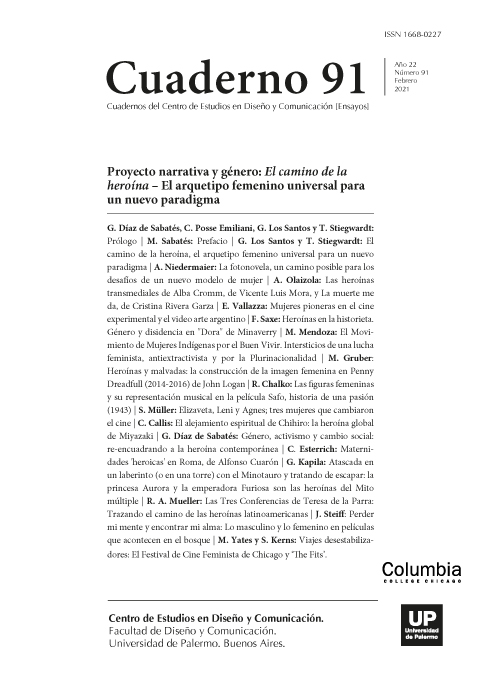The Heroine’s Path. Teresa de la Parra: Charting the Path of Latin American Heroines
Résumé
As a heroine in the novel of her own story, the Venezuelan author Teresa de la Parra (1889-1936), was an acknowledged noted novelist and gifted public speaker in her lifetime when she was invited to deliver three lectures in Bogotá and Barranquilla, Colombia, in 1930, and later in Cuba. The lectures were not published until 1961 in Caracas by the Venezuelan critic Arturo Uslar Pietri and I translated the lectures for the book, Teresa de la Parra: A Literary Life (Cambridge Scholars Publishing, 2012). The Tres Conferencias: Influencia de las mujeres en la formación del alma americana or Three Lectures: Women’s Influence in the Formation of the American Soul, described the important roles women played during the Conquest, Colonial, and Independence eras in Latin America. The Colombian Lectures represent her last work. In the 1970’s, when critics began to value women’s writing for its valuable contribution to literature, they began to read and value this author’s work that addressed female heroines.
In these lectures de la Parra declared herself a “moderate feminist” as she highlighted the important roles the founding mothers played in Latin American history and in the formation of its ethos and culture. She wanted to uncover the hardships that had been imposed on women starting with the conquest of México. As Spain conquered more of the Latin American continent, women played important roles, but de la Parra pointed out that the stories of half the human race had been ignored by Latin American historians, who tended to write about battles and victories rather than the sacrifices and the heroic contributions of women. By recuperating the voices of the “founding mothers,” Queen Isabela, Ňusta Doña Isabela (el Inca Garcilaso’s mother) Doña Marina, Madre Castillo, Policarpa Salavarrieta, Manuela Sáenz and her contemporaries Delmira Augustini and Gabriela Mistral, de la Parra created a community of heroines.
Références
Acker, B.(1988) Ifigenia: Teresa de la Parra’s Social Protest. Letras Femeninas. 14.1-2: 73-74.
Lemaître, L. A. (1986) Between Flight and Longing: The Journey of Teresa de la Parra. Chicago: Vantage Press.
Parra, Teresa de la. (1993) Iphigenia: The diary of a young lady who wrote because she was bored. trans. Bertie Acker. Austin: University of Texas Press.
—. (1953) Epistolario íntimo. Caracas: Línea Aeropostal Venezuelan.
—.(1991) Obra: (narrativa, ensayos, cartas). Ed. Velia Bosch. Caracas: Biblioteca Ayacucho.
Pantin, Y. and Ana Teresa Torres. (2003) El hilo de la voz: antología crítica de escritoras venezolanas del siglo XX. Caracas: Fundación Polar.
Palacios, M. F. (2001) Ifigenia: Mitología de la Doncella Criolla. Caracas: Fondo Editorial Angria Ediciones.
Pratt, A. (1981) Archetypal Patterns in Women’s Fiction. Bloomington: Indiana University Press.
Mueller, R. (2012) “María Eugenia Alonso: The Modern Iphigenia Sacrificed to Society,” The Woman in Latin American and Spanish Literature: Essays on Iconic Characters. pp. 60-73. McFarland.
----- (2012) Teresa de la Parra: A Literary Life. Cambridge Scholars Publishing: Newcastle upon Tyne, UK.
Los autores/as que publiquen en esta revista ceden los derechos de autor y de publicación a "Cuadernos del Centro de Estudios de Diseño y Comunicación", Aceptando el registro de su trabajo bajo una licencia de atribución de Creative Commons, que permite a terceros utilizar lo publicado siempre que de el crédito pertinente a los autores y a esta revista.


